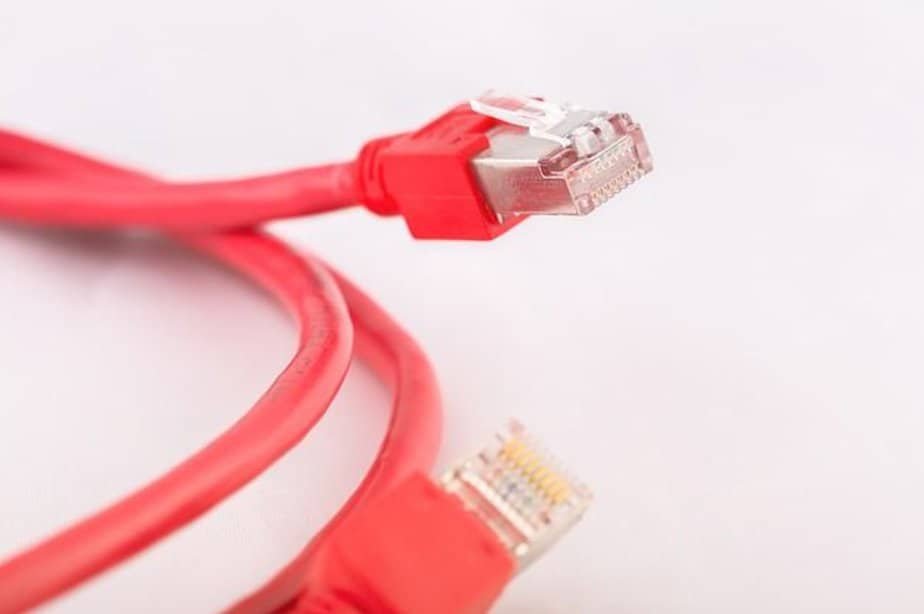Network cables, an indispensable accessory of modern communication technology, are now offered in different categories. These categories describe the respective performance of the individual types of network cables and their transmission classes, the so-called link classes.
The network cable system is based on the fact that high category cables automatically cover the performance parameters of all network cable categories below. Very specific and binding requirement criteria have been defined for each network cable category.
My LAN cable recommendations
Below are my TOP recommendations for network cables:
The categories of network cables
Today there are network cables in categories 1 to 8 (Cat 1 to Cat 8). However, category 1 and 2 cables are defined only informally and play no role in practical application. Cat 1 cables were meant for operating frequencies of no more than 100 kHz and just above and were suitable for pure voice transmission in telephony.
Cat 2 cables are suitable for operating frequencies of 1.5 MHz or less. Most people used them for house wiring with the ISDN primary rate connection. You can still find category 3 and 4 LAN cables in old installations in rare cases, but they are now irrelevant for practical use.
Cat 3 LAN cables were suitable for operating frequencies up to 16MHz. They were unshielded twisted pairs for North America. Cat 4 network cables carried frequencies up to 20MHz and were only laid in the United States. The Ethernet cables Cat 5, Cat 6, and Cat 7 are relevant for current installations.
Cat 5 standards
Cat 5 cables are the standard, and you can find them in most installations. They are suitable for signal transmission at high data transmission rates. They are designed for operating frequencies of 100 MHz. Their standard designation is EIA/TIA-568.
Due to the high data transmission rates and operating frequencies, you should carry out assembly and installation with particular care. Today, Cat 5 LAN cables form the backbone of structured computer network cabling and are also suitable for Fast or Gigabit Ethernet in home networks.
Cat 6 standard
The standard designation of Cat 6 network cables is EN50288. They are designed for higher operating frequencies of up to 250 MHz. However, the transmission speed possible in a Cat 6 network cable decreases in proportion to its length.
The areas of application for Cat 6 cables, therefore, extend to all voice and data transmissions and ATM and multimedia networks. Cables in the sub-category Cat 6a (Category 6 augmented) are particularly powerful because they are suitable for operating frequencies of up to 500 MHz.
With LAN cables in this category, the transmission distances are technically limited to around 100 m. There are high technical requirements with regard to the suppression of secondary signals and noise. Cat 6a cables are suitable for 10 Gigabit Ethernet.
Cat 7 standards
The Cat 7 LAN cables are a global standard except in the United States. They are also known as “Class F” and enable operating frequencies of 600 MHz. In the Cat 7a subcategory (known as Class FA), even operating frequencies of 1,000 MHz are possible.
All Cat 7 cables each have 4 separately shielded wire pairs within a common shield. They fully meet the requirements of the IEEE 802.3an standard and are therefore absolutely suitable for 10 Gigabit Ethernet. Today, two different connector types are standardized and available worldwide for Cat 7 network cables.
These are the Nexans GG45 type and the Siemon TERA type. However, the standard here is the RJ-45 connector, which is entirely backward compatible with all LAN cable categories.
Before you buy and install the network cable, it’s worth making a few considerations as to which cable is the right one. You should also compare the prices because individual retailers offer quite different prices for the cables.
Cat 8 standard
The Cat 8 standard is the latest standard for network cables. It was officially launched at the end of 2016. With this standard, the transmission speed is up to 40 Gbit/s, and the bandwidth used is 2000 MHz.
The transmission speed is a theoretical value and will hardly be achieved permanently in practice.
As with category 7 Ethernet cables, four individually shielded pairs of wires are used here. They are also sheathed together with a shield.
However, there is one more unique feature. Cat 8 network cables are available in two different subcategories: Cat 8.1 and Cat 8.2. The difference relates to the connector used.
Cat 8.1 cables have an RJ-45 connector, just like those used for network cables in other categories. On the other hand, special plugs are used for the Cat 8.2 cables, as their application area is primarily in the professional sector.

